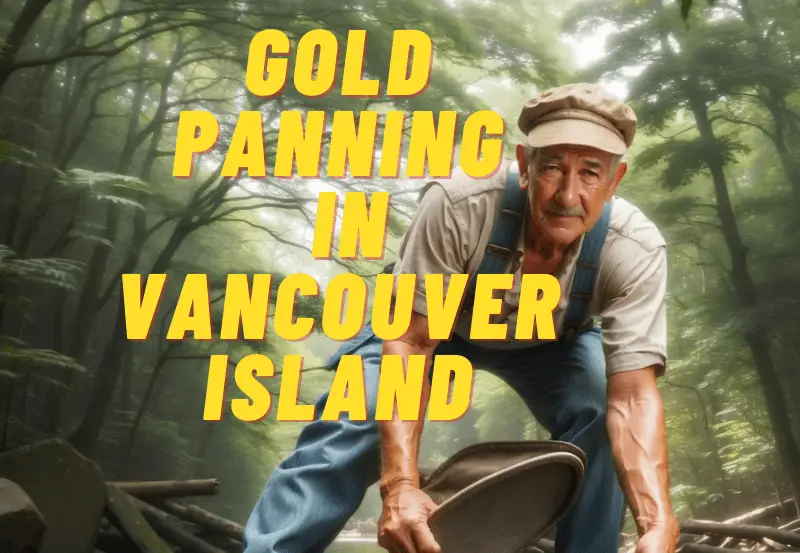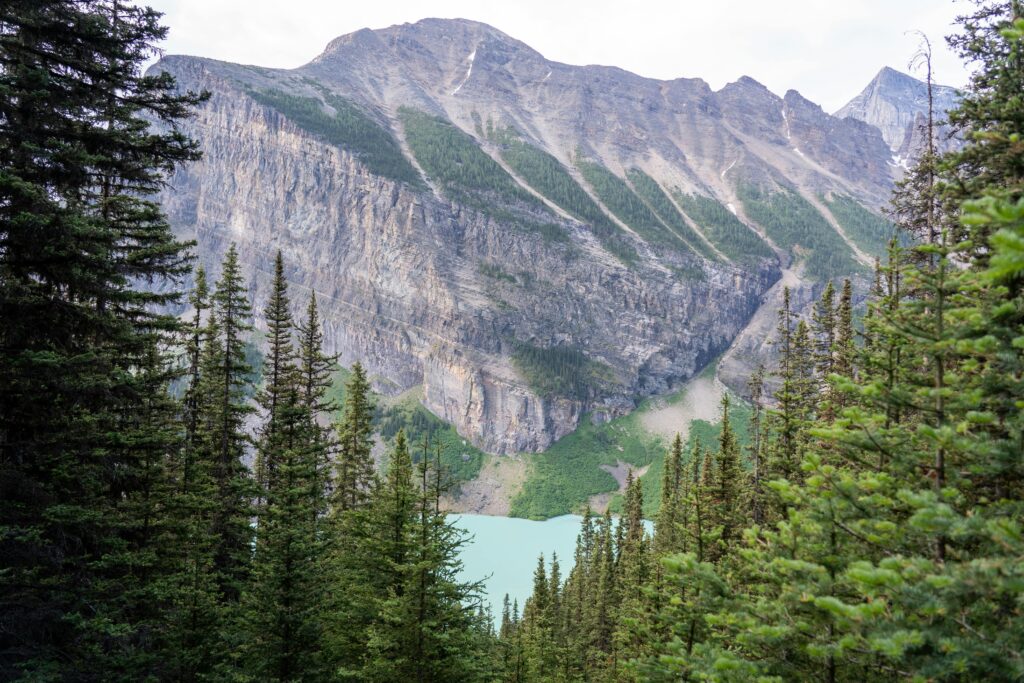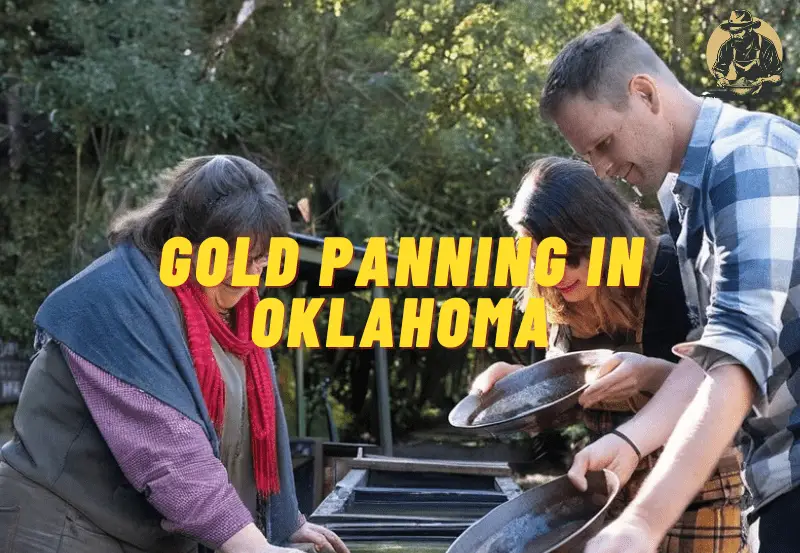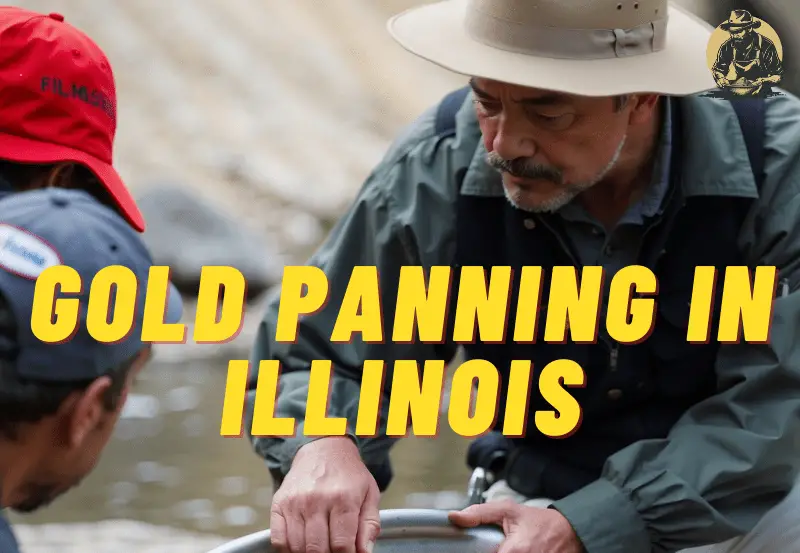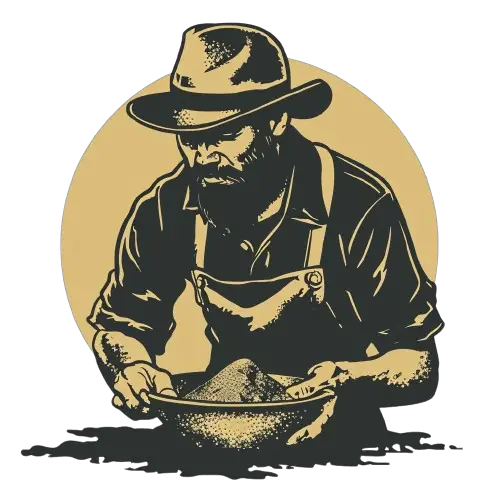Have you ever wondered about the hidden treasures that lie within Vancouver Island? Well, look no further because we are about to take you on a journey of discovery. In this article, we will be unveiling the secrets of Canada’s treasured isle through the exciting adventure of gold panning. Get ready to immerse yourself in the stories of those who have struck gold and learn how you too can experience the thrill of finding your own precious treasures in this stunning part of the world. So grab your pan and let’s start uncovering the secrets of Vancouver Island!
The History of Gold Panning in Vancouver Island
Vancouver Island, located in the southwestern part of British Columbia, is not just known for its picturesque landscapes and thriving wildlife. It is also a hotspot for gold panning enthusiasts. The island’s rich history of gold mining and the abundance of gold in its rivers have attracted countless prospectors and adventurers over the years.
Early Discoveries and Gold Rushes
The history of gold panning in Vancouver Island dates back to the mid-19th century when gold was first discovered in the region. In 1851, gold was found on the Fraser River, sparking the Fraser River Gold Rush. This significant event brought numerous gold seekers to the area, including Vancouver Island. Soon after, gold was discovered in the nearby Leech River, leading to the Leechtown Gold Rush in 1865.
These early gold rushes marked the beginning of Vancouver Island’s reputation as a gold-rich destination. The influx of prospectors brought about rapid development in the region, with small mining towns springing up throughout the island. The incredible wealth that was extracted from the land during this time played a crucial role in the growth and development of Vancouver Island.
Importance of Gold Mining in Vancouver Island
Gold mining played a vital role in shaping the history and economy of Vancouver Island. During the late 1800s and early 1900s, gold production on the island reached its peak, attracting thousands of people from all over the world seeking their fortune. The revenue generated from gold mining greatly contributed to the island’s infrastructure and economic growth.
Not only did gold mining provide employment opportunities for locals, but it also supported various businesses and industries. The mining towns that sprouted up around the island became hubs of activity, with stores, hotels, saloons, and other establishments catering to the needs of miners and their families. Gold mining also helped to establish transportation networks, such as roads and railways, thereby facilitating the development of the island’s infrastructure.
Notable Gold Mines on Vancouver Island
Vancouver Island boasts several notable gold mines that have played a significant role in its mining history. One such mine is the Alberni Valley Gold District, located near the city of Port Alberni. The Alberni Valley area has a long history of gold mining, with various operations dating back to the late 1800s. The mine produced substantial amounts of gold during its operation and is known for its rich deposits.
The Nanaimo Gold District, situated near the city of Nanaimo, is another prominent mining area on Vancouver Island. Gold mining activities in this district were prevalent during the late 1800s and early 1900s. The district’s gold-bearing creeks and rivers attracted numerous miners, and it was here that the famous Leech River Gold Rush took place.
The Cowichan Valley Gold District, located near Duncan, is yet another noteworthy mining area on Vancouver Island. The district’s history of gold mining stretches back to the mid-19th century, with several productive mines operating in the area. The region’s rivers and streams are known for their gold-rich gravels, making it a prime location for gold panning enthusiasts.
Gold Panning Methods and Techniques
Gold panning methods have evolved over the years, but the basic principles remain the same. Whether using traditional panning techniques or employing more advanced methods like sluicing and metal detecting, Vancouver Island offers various options for gold panning enthusiasts.
Traditional Panning Techniques
Traditional panning involves using a pan to separate gold from sediment and other materials. The process is relatively simple but requires skill and patience. To begin, you scoop up a portion of sediment and immerse it in water, gently swirling the pan in a circular motion. As you do so, the water carries away lighter materials while the heavier gold particles settle to the bottom of the pan. With careful manipulation of the pan’s angle, you can separate the gold from the rest of the sediment.
Sluicing and Dredging
Sluicing is another popular method used in gold panning. It involves using a long, narrow box called a sluice box, which is often equipped with riffles or traps that catch and retain the gold as water flows through. By strategically placing the sluice box in a river or stream, you can channel water through it, allowing the flow to wash away lighter materials while capturing the heavier gold particles.
Dredging is a more advanced and mechanized method of gold panning. It involves using specialized equipment, such as suction dredges or trommels, to extract gold from riverbeds and streambeds. These machines operate by sucking up sediment from the river or stream bottom and separating the gold through various mechanisms. Dredging can be highly efficient and is often used in larger-scale mining operations.
Metal Detecting for Gold
Metal detecting is another technique employed by gold prospectors on Vancouver Island. Using a metal detector, enthusiasts can search for gold nuggets and other buried treasures. Metal detectors work by emitting electromagnetic waves that interact with metallic objects buried underground. When the detector picks up these signals, it alerts the user, who can then excavate the area to uncover the treasure.
Metal detecting is particularly useful in areas where gold is present but not easily visible, such as in heavily mineralized soil or bedrock. It allows prospectors to cover larger areas and identify potential hotspots for gold panning. Coupled with other techniques like traditional panning or sluicing, metal detecting can significantly increase the chances of finding gold on Vancouver Island.
Key Areas for Gold Panning in Vancouver Island
Vancouver Island is teeming with prime locations for gold panning, each offering its unique set of opportunities and challenges. Whether you are a seasoned prospector or a beginner, exploring these key areas can greatly enhance your gold panning experience.
Alberni Valley Gold District
The Alberni Valley Gold District, situated in the Alberni Valley region near Port Alberni, is a popular destination for gold panning enthusiasts. The significant gold deposits in this area make it a promising location to try your luck. The Stamp River, in particular, is known for its gold-bearing gravels and has produced substantial amounts of gold over the years.
Nanaimo Gold District
The Nanaimo Gold District, centered around the city of Nanaimo, is another renowned area for gold panning. This district gained prominence during the Leech River Gold Rush, which saw a massive influx of miners eager to strike it rich. The rivers and creeks in this area are known for their placers, making it an ideal spot for gold panning activities.
Cowichan Valley Gold District
The Cowichan Valley Gold District, near Duncan, offers both recreational and commercial gold panning opportunities. This district has a long history of gold mining, and its rivers and streams are known for their gold-bearing gravels. Whether you choose to pan in the Cowichan River, the Koksilah River, or other smaller tributaries, you are sure to find the thrill and excitement of searching for gold in this district.
Permits and Regulations for Gold Panning
Before embarking on your gold panning adventure on Vancouver Island, it’s essential to familiarize yourself with the permits and regulations in place. This ensures that you are complying with the necessary guidelines and helps preserve the environment for future generations of prospectors.
Obtaining a Gold Panning Permit
To engage in recreational gold panning on Vancouver Island, you may need to obtain a permit from the appropriate authorities. The Ministry of Forests, Lands, Natural Resource Operations, and Rural Development (FLNRORD) is responsible for issuing these permits.
The permit requirements in British Columbia may vary depending on the specific location and the extent of your activities. It’s crucial to consult the FLNRORD or local government websites to determine the specific permits and rules that apply to your desired gold panning areas. This step will ensure that you are operating within the legal framework and preserving the integrity of the land.
Environmental Regulations
As with any outdoor activity, responsible gold panning involves adhering to environmental regulations to minimize your impact on the ecosystem. Vancouver Island is home to diverse plant and animal species, some of which may be threatened or endangered. It is crucial to respect the environment and not disturb sensitive habitats while pursuing your gold panning activities.
Some general environmental regulations to follow include:
- Stay on designated trails and pathways to avoid damaging delicate vegetation.
- Leave no trace behind by properly disposing of waste and packing out all personal belongings.
- Avoid disturbing wildlife and their habitats, especially during breeding seasons.
- Use eco-friendly and biodegradable materials when possible.
By observing these regulations, you can contribute to the preservation and conservation of Vancouver Island’s unique ecosystems.
Responsible Gold Panning Practices
In addition to obtaining the necessary permits and adhering to environmental regulations, practicing responsible gold panning techniques is essential for the long-term sustainability of the activity and the preservation of Vancouver Island’s natural resources.
Some responsible gold panning practices include:
- Minimizing sediment disturbance by panning carefully and avoiding unnecessary disruption to riverbeds.
- Returning any disturbed sediment back to its original location after panning.
- Avoiding the use of harmful chemicals or pollutants during the gold extraction process.
- Practicing catch and release if you encounter any threatened or endangered aquatic species.
- Participating in community-led clean-up efforts to keep gold panning sites and surrounding areas free of debris and waste.
By adopting these responsible practices, you can ensure that gold panning remains a sustainable and enjoyable activity on Vancouver Island.
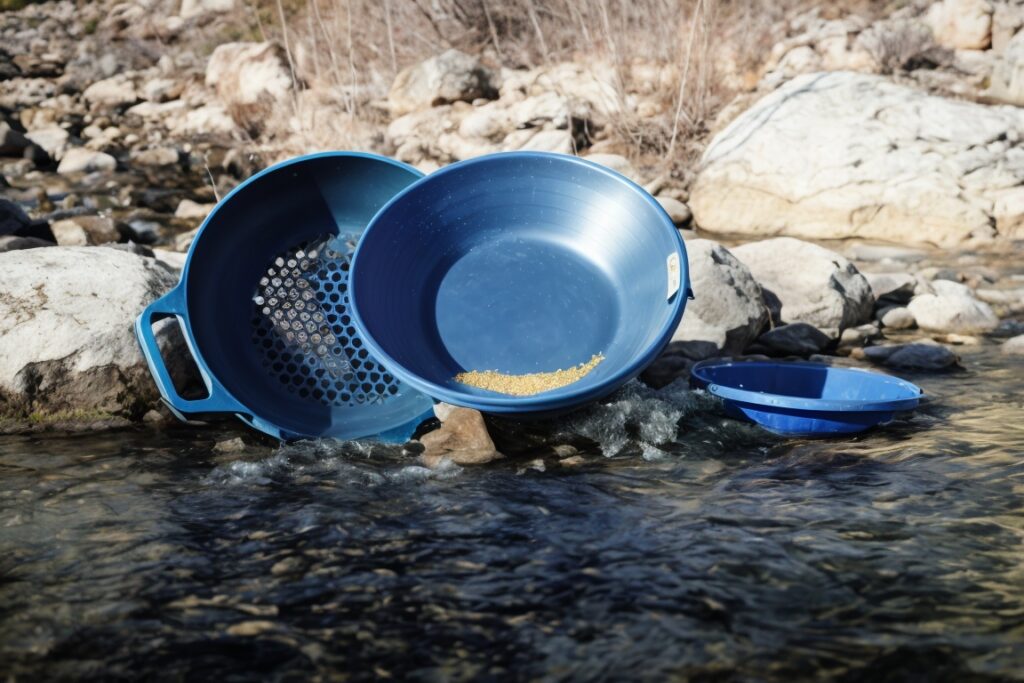
Gold Panning Equipment and Tools
To embark on your gold panning adventure on Vancouver Island, you will need the appropriate equipment and tools. Whether you prefer a traditional approach or want to employ high-tech tools for more efficient prospecting, having the right gear can greatly enhance your chances of success.
Basic Gold Panning Equipment
For beginners or those who enjoy a more traditional gold panning experience, the following equipment is essential:
- Gold pan: Choose a sturdy, shallow pan with riffles to help capture the gold particles.
- Snuffer bottle: Used to suck up small gold particles and prevent them from being lost.
- Classifier: A metal screen or sieve that helps separate larger rocks and debris from the finer sediment.
- Tweezers or magnifying glass: Handy tools for examining and picking up minuscule gold pieces.
- Shovel or trowel: Used for digging in the riverbed or streambed.
These basic tools are readily available at outdoor supply stores and are suitable for recreational gold panning.
High-Tech Tools for Gold Prospecting
For those looking to take their gold prospecting to the next level, advanced equipment and tools can streamline the process and increase efficiency. Some high-tech options include:
- Metal detectors: These devices use electromagnetic waves to detect metallic objects buried underground, making them useful for locating gold nuggets or hidden gold deposits in the soil or bedrock.
- Drywashers: Ideal for prospecting in arid regions, drywashers use a combination of air and vibration to separate gold from other materials without the need for water.
- Sluice boxes and trommels: These larger-scale tools are used for commercial gold mining but can also be employed by serious enthusiasts. They allow for the processing of larger volumes of material, increasing the chances of finding significant amounts of gold.
When considering these high-tech options, it is important to invest in quality equipment and learn how to properly use them to maximize their effectiveness.
Safety Gear and Accessories
While gold panning is a recreational activity, it is still important to prioritize safety. The following safety gear and accessories are recommended for a safe gold panning experience:
- Safety goggles: Protect your eyes from flying rocks or debris while digging or sifting through soil.
- Gloves: Keep your hands safe from cuts, blisters, or exposure to chemicals or contaminants in the soil.
- Sturdy footwear: Wear closed-toe shoes or boots with good traction to prevent slips and falls.
- First aid kit: Carry a basic first aid kit with essential supplies in case of minor injuries or accidents.
- Insect repellent and sunscreen: Protect yourself from sunburn and insect bites, especially when exploring gold panning sites in the summer.
Remember, safety should always be a top priority when engaging in any outdoor activity, including gold panning.
Tips and Advice for Successful Gold Panning
Gold panning is an art that requires not only the right equipment but also the knowledge and skills to be successful. By following these tips and advice, you can enhance your chances of finding gold on Vancouver Island.
Researching Potential Gold Panning Sites
Before heading out to any gold panning destination on Vancouver Island, it is essential to conduct thorough research. The internet, local library, or gold panning forums can be valuable sources of information. Look for historical records, geology reports, and tips from experienced prospectors to narrow down your search and find the best potential sites.
Understanding Geological Indicators
Being familiar with geological indicators can significantly improve your gold panning success rate. Learn to recognize signs such as exposed bedrock, quartz veins, or iron-rich deposits, as these can indicate the presence of gold. Geological maps and studies can provide valuable insights into the specific geological features found in different areas of Vancouver Island.
Proper Gold Panning Techniques
Mastering the proper gold panning techniques is crucial for separating gold from other materials effectively. Here are some tips to keep in mind:
- Patience is key: Gold panning requires patience and perseverance. Take your time and pan methodically, ensuring that you fully wash away all loose material to reveal any hidden gold particles.
- Use the right motions: Gentle circular motions with the pan are typically the most effective. Allow the water to carry away lighter sediment while constantly tilting and angling the pan to retain heavier gold particles.
- Practice accuracy: When panning, it is important to accurately scan and inspect the sediments in your pan. Remaining focused and vigilant ensures that you don’t miss any potential gold.
Remember, achieving proficiency in gold panning techniques can take time and practice. Don’t be discouraged if you don’t strike gold immediately. The thrill of the hunt and the joy of discovering even the tiniest speck of gold can make the experience worthwhile.
Joining Gold Panning Tours and Workshops
For those new to gold panning or looking to refine their skills, joining guided tours, workshops, or classes can be a great way to learn from experienced gold prospectors and connect with like-minded individuals.
Guided Gold Panning Tours
Guided gold panning tours on Vancouver Island offer a unique opportunity to experience gold panning under the guidance of experienced prospectors. These tours typically take participants to prime gold panning locations and provide hands-on instruction and guidance. Additionally, guides may share their knowledge about the local history, geology, and best practices in gold panning.
Joining a guided gold panning tour not only increases your chances of finding gold but also allows you to learn from the experts, making it an educational and enjoyable experience.
Gold Panning Workshops and Classes
Gold panning workshops and classes are another excellent option for learning the art of gold panning. These sessions are typically conducted by experienced prospectors who provide comprehensive instruction on gold panning techniques, equipment use, and safety. Workshops may also cover topics such as researching potential gold panning sites, understanding geology, and responsible gold panning practices.
These workshops and classes are suitable for beginners and experienced individuals alike, offering a chance to improve skills and learn new techniques from seasoned experts.
Joining Gold Prospecting Clubs
Gold prospecting clubs provide a supportive community for individuals passionate about gold panning and mining. By joining a club, you gain access to a network of experienced prospectors who are willing to share their knowledge, tips, and tricks. Clubs often organize outings, group panning events, and social gatherings, creating opportunities to learn from others and build lasting friendships.
Being part of a gold prospecting club also gives you access to a wealth of resources, such as club newsletters, publications, and exclusive mining claims. These clubs can be a great asset in your gold panning journey, providing guidance, camaraderie, and opportunities for group adventures.
Gold Panning and Environmental Conservation
While gold panning can be an exciting and rewarding activity, it is essential to minimize your environmental impact and preserve the natural beauty of Vancouver Island. Here are some key considerations for practicing environmentally responsible gold panning.
Minimizing Environmental Impact
When engaging in gold panning activities, it is crucial to minimize disturbance to ecosystems and habitats. Avoid digging unnecessarily and be careful not to disrupt sensitive vegetation or aquatic life. Stay on designated paths or areas to prevent erosion and damage to the environment. By being mindful of your surroundings and minimizing your impact, you can help maintain the ecological integrity of Vancouver Island.
Cleaning up After Gold Panning
Leaving the gold panning site as you found it is essential for environmental conservation. Properly dispose of waste, including food packaging, plastic, and other debris. Pack out everything that you bring in and dispose of waste in designated areas. Leaving the area clean and free of garbage ensures that it remains pristine for future gold panning enthusiasts to enjoy.
Awareness of Endangered Species Habitats
Vancouver Island is home to a variety of plant and animal species, including some that are endangered or vulnerable. Familiarize yourself with the local plant and animal life, and be mindful of any protected habitats in the areas where you plan to go gold panning. Avoid disturbing or damaging these habitats, and if you encounter any critically endangered species, keep a safe distance and observe without interfering.
By respecting and preserving the flora and fauna of Vancouver Island, you can contribute to the long-term conservation of its natural environment.
Famous Gold Finds on Vancouver Island
Vancouver Island’s rich gold mining history is punctuated by several famous gold discoveries. These finds have cemented the island’s reputation as a gold-rich destination and continue to captivate the imagination of prospectors and history enthusiasts.
The Leechtown Gold Rush
The Leechtown Gold Rush of 1864 was one of the most significant gold rushes in Vancouver Island’s history. Gold was discovered in the Leech River by a prospecting party led by a man named Hicklin. News of the find spread quickly, and thousands of gold seekers flocked to the area in search of fortune. The Leechtown settlement grew rapidly, boasting a population of around 5,000 people at its peak.
The Leechtown Gold Rush brought rapid development to the region, with numerous businesses, hotels, and services catering to the growing population. However, the gold mining activity declined over time, and the town eventually faded away. Today, Leechtown is a popular destination for history enthusiasts and gold panning enthusiasts looking to uncover remnants of the past.
Gold Discoveries in Barkerville
While not on Vancouver Island, the gold discoveries in nearby Barkerville played a significant role in shaping the gold mining industry in British Columbia and the wider region. The discovery of gold in the Cariboo region in the 1860s sparked a massive gold rush, drawing thousands of prospectors from across North America.
Barkerville, the heart of the Cariboo Gold Rush, quickly grew into a thriving town, boasting a population of over 5,000 people at its peak. The town became a hub for gold mining operations, with numerous mines, businesses, and services supporting the efforts of prospectors. Today, Barkerville remains a preserved historic site, allowing visitors to step back in time and experience the excitement and hardships of the gold rush era.
Modern-Day Gold Finds
While the gold rushes of the past are now part of Vancouver Island’s rich history, gold prospecting and mining continue to this day. With advances in technology and the availability of modern mining equipment, there have been notable gold finds in recent years. While not at the same scale as historical gold rushes, these discoveries highlight the ongoing potential for gold panning and mining on Vancouver Island.
Prospectors and recreational gold panners continue to explore the island’s rivers, streams, and creeks in search of gold. Whether it be the thrill of the hunt or the satisfaction of finding even the smallest gold flakes, the tradition of gold panning lives on, connecting people to the rich history and natural wealth of Vancouver Island.
Gold Panning as a Recreational Activity
Gold panning is not just a hobby or pastime; it is a recreational activity that offers numerous benefits for individuals and families alike. From spending quality time outdoors to the health benefits associated with physical activity, gold panning on Vancouver Island provides an enjoyable and rewarding experience.
Family-Friendly Gold Panning
Gold panning is an activity that can be enjoyed by people of all ages, making it ideal for family outings. Children are often fascinated by the idea of “treasure hunting” and can learn about history, geology, and the natural environment while engaging in this recreational activity. Gold panning offers a chance for families to bond, create lasting memories, and connect with nature.
Health Benefits of Gold Panning
In addition to the social and educational aspects, gold panning also offers health benefits associated with being outdoors and engaging in physical activity. The act of panning, digging, and sifting can provide a moderate level of exercise while enjoying the beauty of Vancouver Island’s natural landscapes. Spending time in nature has been associated with reduced stress levels, improved mental well-being, and increased physical fitness.
Gold Panning Competitions
For those seeking a bit of friendly competition, gold panning competitions can add an exciting element to the recreational activity. These events often include various challenges, such as timed panning, accuracy tests, and even team-based competitions. Participating in these competitions allows you to test your skills, learn from fellow competitors, and celebrate the joy of gold panning with like-minded individuals.
Whether you are a novice or seasoned gold panner, immersing yourself in the recreational aspect of gold panning can bring you a sense of joy, fulfillment, and a deeper connection to Vancouver Island’s natural treasures.
Gold Panning in Vancouver Island: Unveiling the Secrets of Canada’s Treasured Isle
Vancouver Island’s rich history of gold panning, abundance of gold mines, and diverse recreational opportunities make it a captivating destination for gold panning enthusiasts. From the early discoveries and gold rushes to the modern-day finds, the island’s gold mining heritage has left a lasting impact on its landscapes, economy, and culture. By understanding the history, techniques, and regulations associated with gold panning, you can embark on your own adventure and uncover the treasures that lie beneath Vancouver Island’s rivers and streams. Whether you choose to pan for gold with traditional methods or experiment with high-tech tools, Vancouver Island is sure to enrich your gold panning experience. So grab your pan, head out into nature, and immerse yourself in the thrill of the hunt as you uncover the secrets of Canada’s treasured isle.
Get Started Panning
| Product | Description | Link |
|---|---|---|
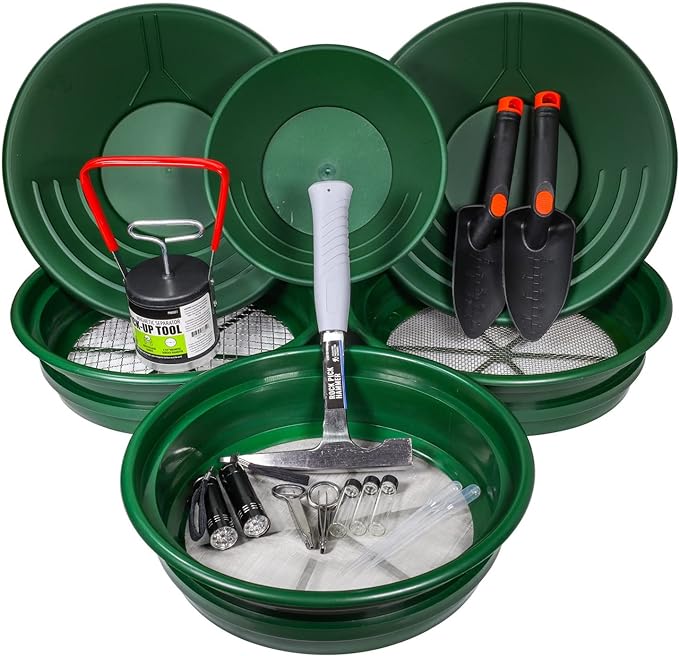 |
Deluxe Gold Panning Kit | Check it out on Amazon |
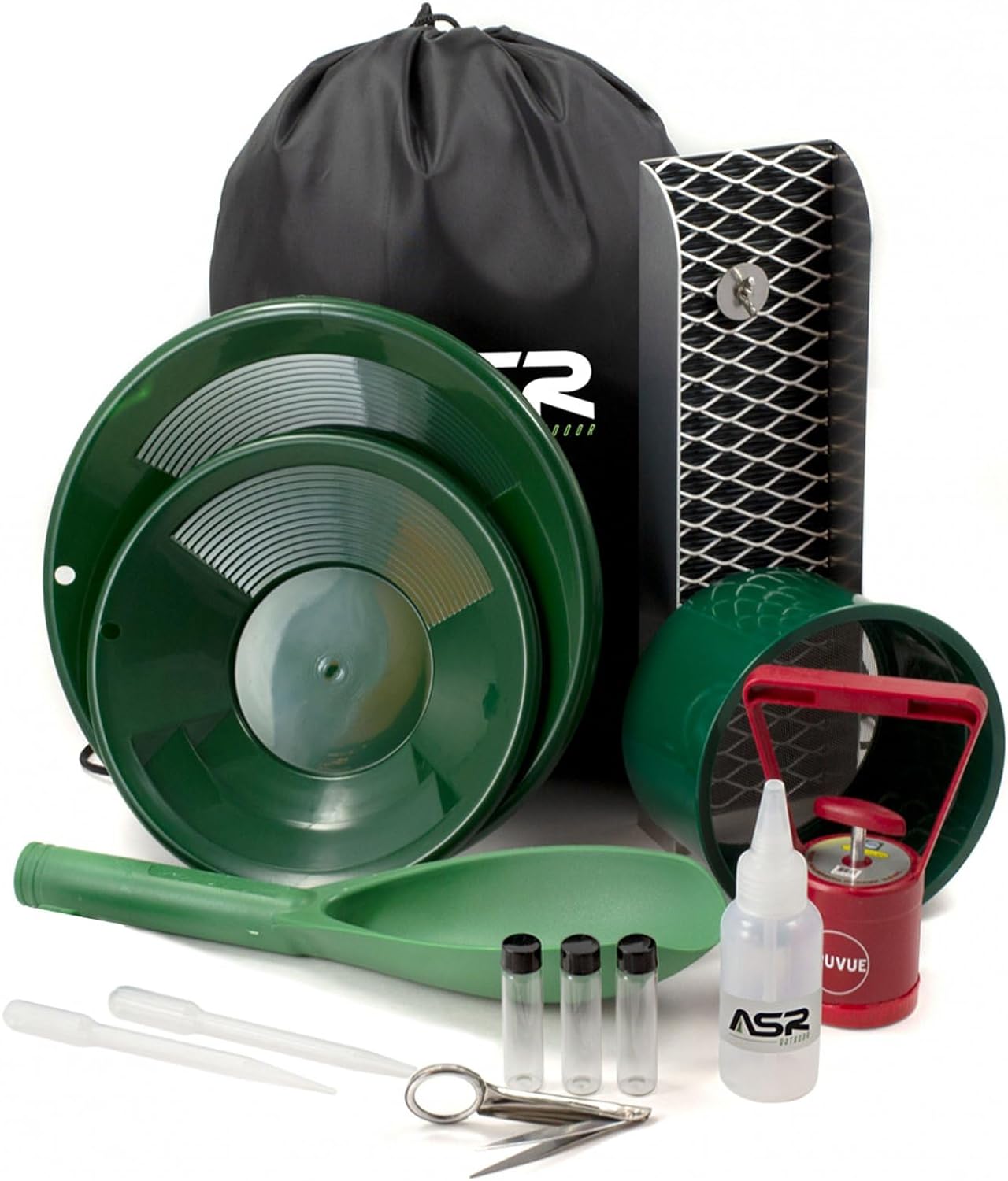 |
Advanced Gold Panning Set | Check it out on Amazon |
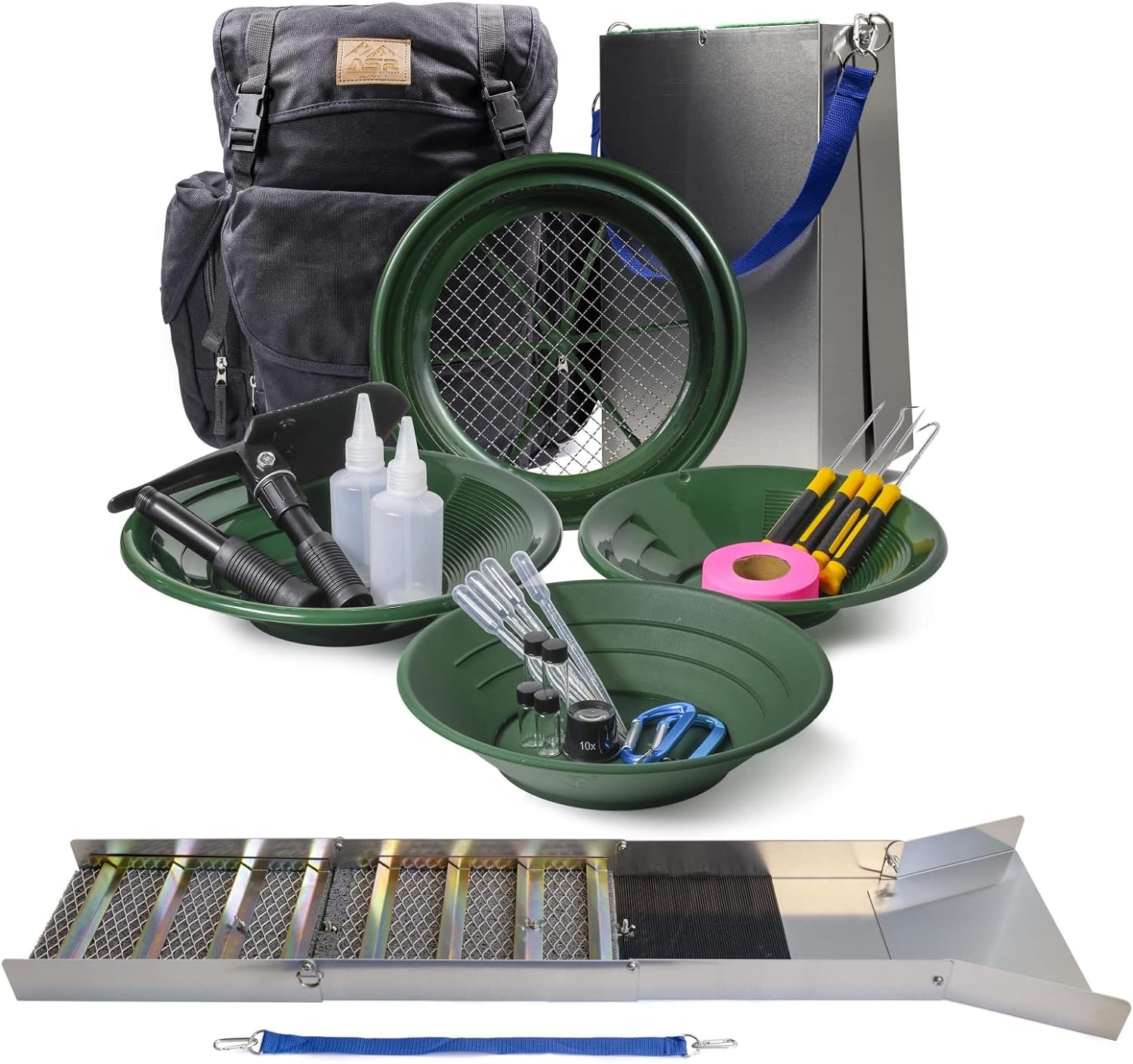 |
Professional Gold Panning Equipment | Check it out on Amazon |
Disclosure: As an Amazon Associate, I earn from qualifying purchases.
